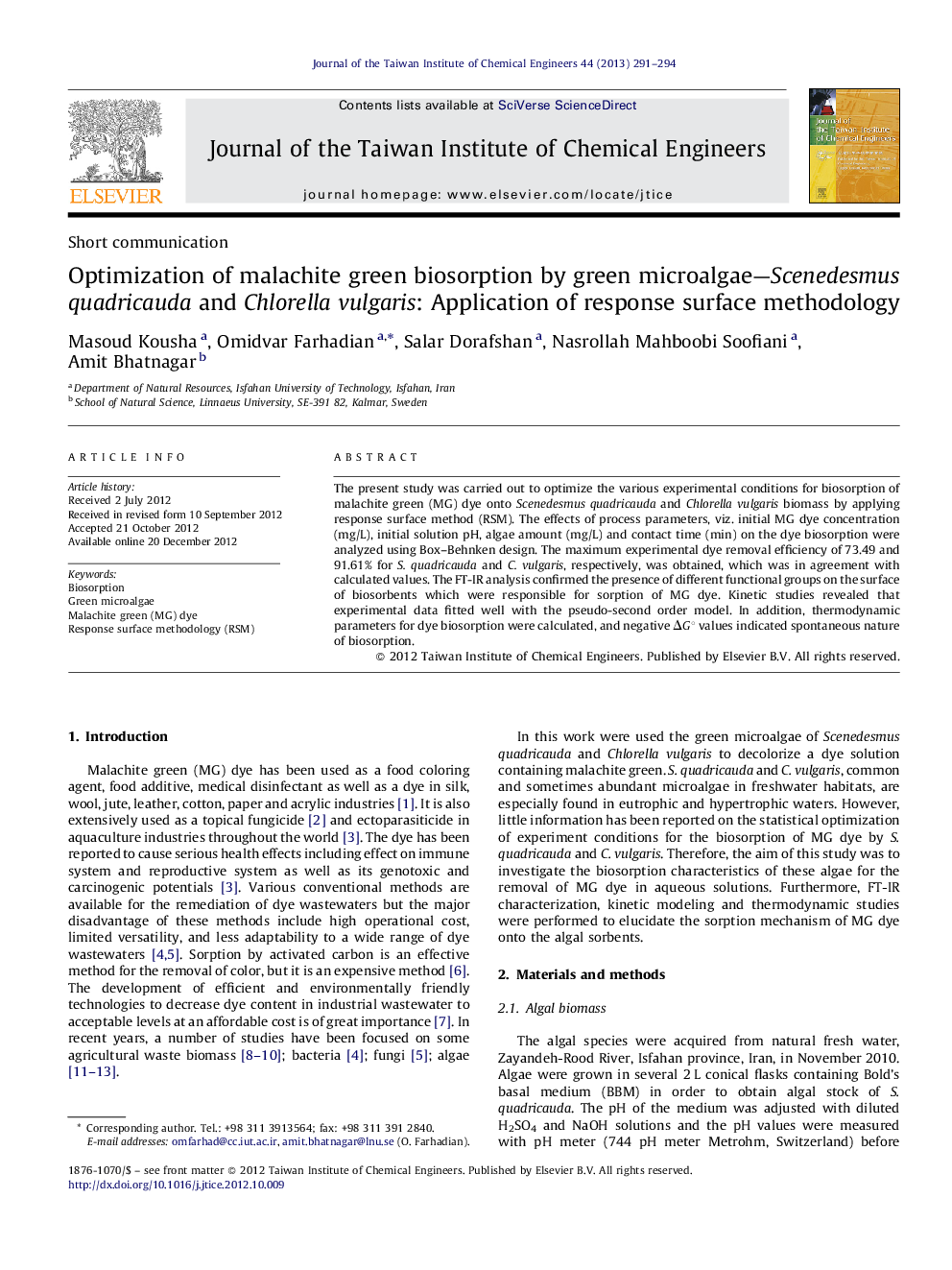| Article ID | Journal | Published Year | Pages | File Type |
|---|---|---|---|---|
| 691329 | Journal of the Taiwan Institute of Chemical Engineers | 2013 | 4 Pages |
The present study was carried out to optimize the various experimental conditions for biosorption of malachite green (MG) dye onto Scenedesmus quadricauda and Chlorella vulgaris biomass by applying response surface method (RSM). The effects of process parameters, viz. initial MG dye concentration (mg/L), initial solution pH, algae amount (mg/L) and contact time (min) on the dye biosorption were analyzed using Box–Behnken design. The maximum experimental dye removal efficiency of 73.49 and 91.61% for S. quadricauda and C. vulgaris, respectively, was obtained, which was in agreement with calculated values. The FT-IR analysis confirmed the presence of different functional groups on the surface of biosorbents which were responsible for sorption of MG dye. Kinetic studies revealed that experimental data fitted well with the pseudo-second order model. In addition, thermodynamic parameters for dye biosorption were calculated, and negative ΔG° values indicated spontaneous nature of biosorption.
► Malachite green dye biosorption was studied onto two green microalgae. ► Response surface methodology was employed to optimize the experimental conditions. ► Effects of process variables on biosorption were analyzed using Box–Behnken design.
